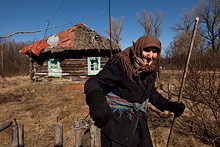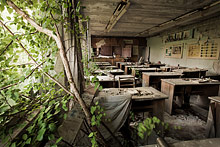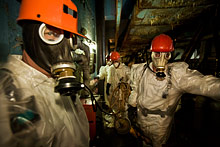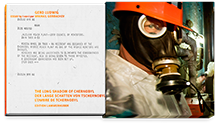Chernobyl Victims
An estimated 800,000 liquidators participated in containing the reactor and the gargantuan clean-up efforts following the nuclear catastrophe. Most of them received high doses of radiation, resulting in cancers and other exposure-induced diseases, often only flaring up decades after the event. 70 percent of the fallout drifted into southern Belarus, contaminating nearly a quarter of the country. As a direct response to the accident, a children’s cancer facility was established in Minsk with Austrian aid. Even though the Belarusian government is downplaying the role of Chernobyl, those scientists and medical personnel who are able to speak out openly see a clear connection between the increasing health problems and the radioactivity released by the disaster.
To help the innocent and most needy, international charities fund several institutions for mentally and physically disabled children. Women exposed to the fallout as children have now reached childbearing age and fear giving birth to babies with congenital defects, worrying how radiation may have affected their genes. While some in the scientific community question that birth defects and retardation are directly attributable to the disaster, noted scientist Alexei Okeanov has described the health effects of the accident as ‘a fire that can’t be put out in our lifetimes’.
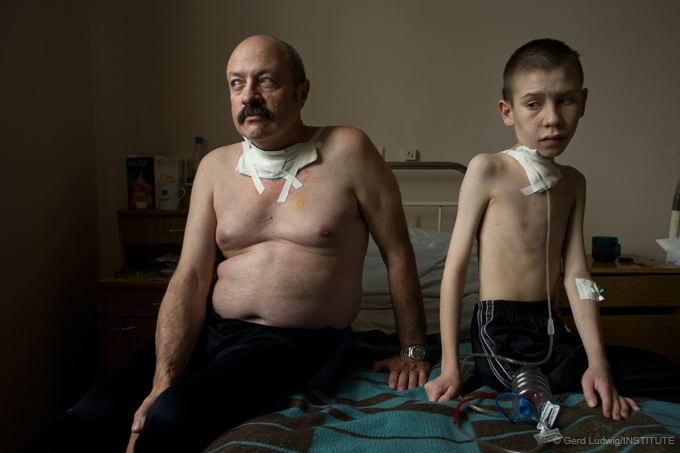
Suffering from thyroid cancer, Oleg, 54, and Dima, 13, receive care at a thyroid hospital in Minsk, where surgery is performed daily. As a liquidator, Oleg was exposed to extreme levels of radiation. This was his third thyroid operation. Dima’s mother claims that Chernobyl’s nuclear fallout is responsible for her son’s cancer, but Belarusian officials are often instructed to downplay the severity of the radiation. [Minsk, Belarus 2005]
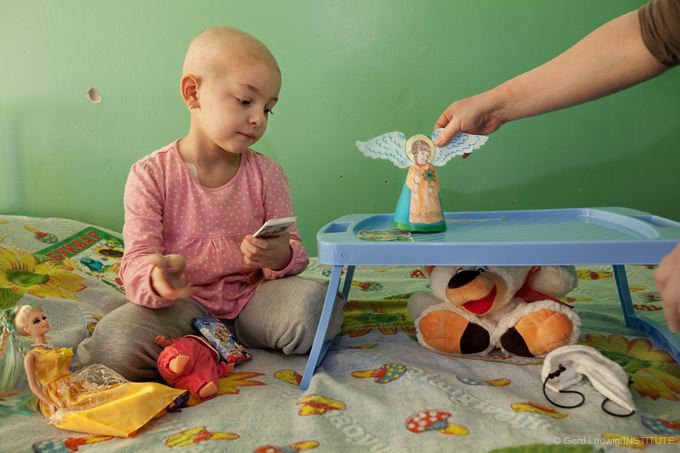
Only 5 years old and suffering from leukemia, Veronika is hospitalized at the Center for Radiation Medicine in Kiev. Her mother Yelena, 29, was born four years before the Chernobyl accident in nearby Chernigov, a city heavily affected by nuclear fall-out. According to doctors at the hospital, many patients’ conditions are a direct result of the radioactivity released after the accident. [Kiev, Ukraine 2011]
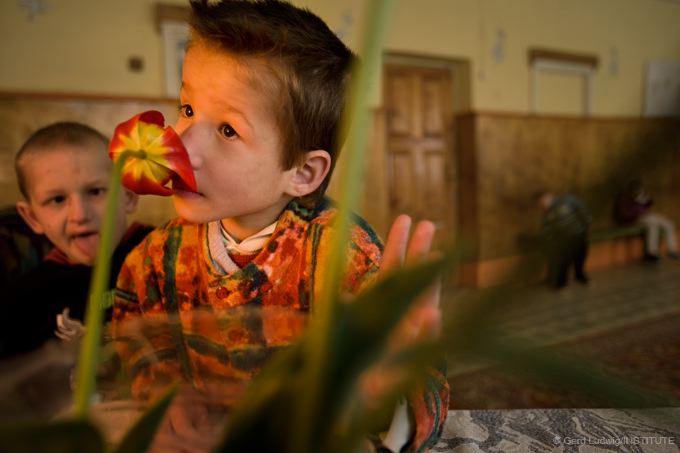
In an orphanage in Belarus, a mentally disabled girl enjoys the scent of a tulip. Children born in the fallout region are said to have a higher rate of birth defects and retardation, a belief supported by many – but not all – in the scientific community. Institutions established with international aid in the aftermath of the disaster continue to provide much needed financial support to homes and orphanages housing children affected by the fallout. [Vesnova, Belarus 2005]
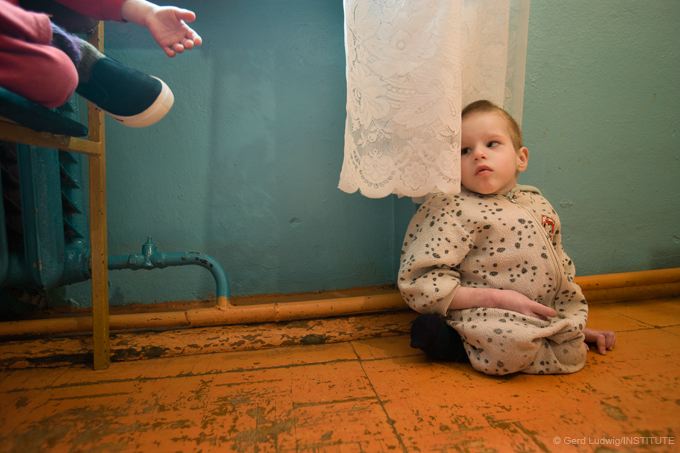
Severely physically and mentally handicapped, 5-year-old Igor was given up by his parents and now lives at a children’s mental asylum, which cares for abandoned and orphaned children with disabilities. It is one of several such facilities in rural southern Belarus receiving support from Chernobyl Children International, an aid organization established in 1991 in the aftermath of the world’s worst nuclear disaster. [Vesnova, Belarus 2005]
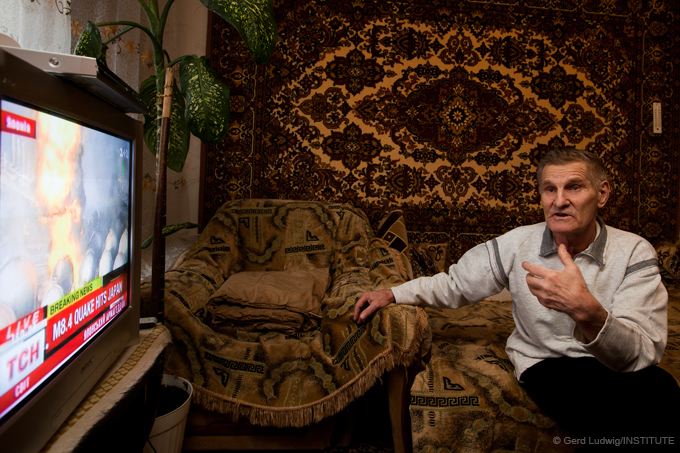
Victor, 70, a liquidator of the Chernobyl accident, watches news of the nuclear disaster in Fukushima, Japan. A major in the army, he was on duty when the Chernobyl explosion occurred. After the disaster, he had two heart attacks and developed severe stomach cancer. Evacuated from Pripyat, he now lives with his family in Troeschina, a suburb of Kiev to which more than one-third of the population was relocated after the Chernobyl accident. [Kiev, Ukraine 2011]
MORE GALLERIES:
All Photographs © Gerd Ludwig/INSTITUTE. All Rights Reserved.
For Licensing Information, Please Contact Us

